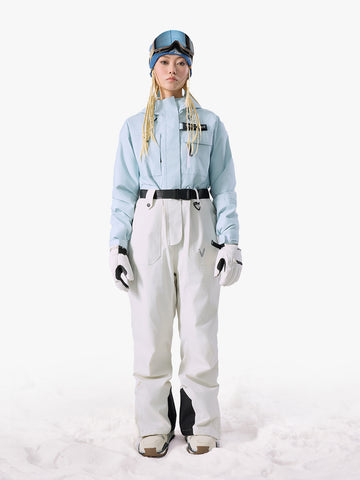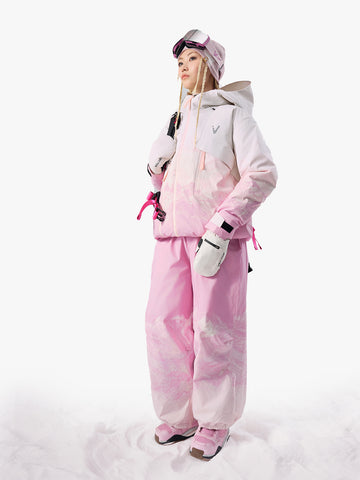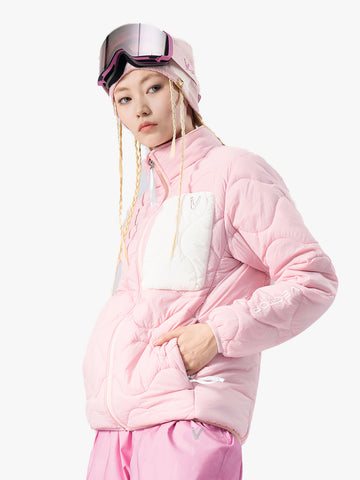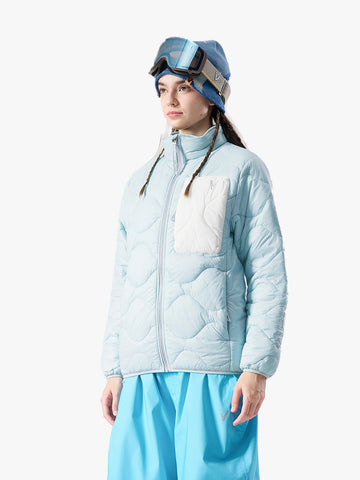As the snow season is ending, many of us are unsure how to properly clean our snow wear, and snow gear including our best snowboard gloves. Properly washing and caring for your snow gear is crucial to maintaining its performance and extending its lifespan. Whether it's a snowboard suit, snow gear, or any other winter outerwear, the right cleaning techniques can help preserve its waterproofing, insulation, and overall functionality. By following specific guidelines and using appropriate products, you can ensure that your snow gear remains in top condition, ready for your next winter adventure. Let's delve into the essential steps for effectively washing and caring for your snow gear to keep it at its best. Before diving in, take a peek at the manufacturer's care label – it's like the treasure map for keeping your item shipshape, complete with special instructions and secret care rituals.
We're here to show you the way.
How To Wash Snow Gear?
How To Wash Waterproof Fabrics?
How To Dry?
How To Store Snow Clothes?
How To Wash Snow Gear?
Washing snow gear is crucial for keeping it in top condition, but it's not as simple sentiment from tossing it in the washer. Imagine your snow gear as a loyal companion—it's been through thick snow and wild rides, so it deserves some TLC (tender loving care). First, gather your gear—a mix of resilience and vulnerability. Then, check the labels; they hold the secrets to each item's unique needs. Separate the tough shells from the delicate insulating layers, like separating a wild snowboarder from a graceful skier. Next, opt for a specialized detergent—think of it as the spa treatment for your gear. Wash in cold water to avoid melting any technical magic and choose a gentle cycle to mimic a serene snow run instead of a downhill race. Finally, when it's all clean and fresh as a mountain breeze, let it air dry. Picture your gear basking in the sunlight, rejuvenated, and ready for the next adventure. After all, well-cared-for snow gear is not just an accessory—it. It's the trusty sidekick for your next mountain venture.
How To Wash Waterproof Fabrics?
Much like its counterpart VECTOR, our snow jacket proudly touts exceptional waterproofing, underscoring the importance of meticulous care. When it comes to laundering waterproof fabrics, commence the process by securing every nook and cranny – zip up those pockets and fasten all closures to fortify against any potential infiltration. Next, usher in a gentle detergent into the washing machine, allowing it to weave its cleansing charm. Now, let's turn our attention to the cherished snow pants, deserving of a bit of tender loving care. Treat them like royalty by turning them inside out before subjecting them to a cold water bath. Steer clear of the usual culprits such as bleach or fabric softeners; these garments prefer a gentler touch. As you navigate this laundering odyssey, rest assured that these careful steps will keep your snow gear performing at its peak, ready to embrace whatever winter adventures lie ahead.

How To Dry?
Navigating the drying process for such high-quality gear can be a bit tricky, and many people approach tumble drying with caution – a completely understandable sentiment. It's advisable to refer to the manufacturer's guidelines for specific directions on the garment. Alternatively, you can opt for the gentle touch of air drying under the sun. If your snow gear has DWR treatment, a low-temperature tumble dry or air drying can help reactivate it. This is crucial for restoring waterproofing capabilities.
How To Store Snow Clothes?
Properly storing snow clothes and equipment is essential for preserving their quality. For snow clothes, start by cleaning and fully drying them before folding and storing them in a cool, dry place away from direct sunlight. Utilize cedar blocks or moisture-absorbing products to prevent odors and mildew, and store accessories separately.
As for summer storage of snow equipment, clean and dry your snow gear thoroughly before storing. Consider storing snowboards in a cool, dry area, avoiding exposure to extreme temperatures. A completely understandable sentiment from dust and scratches. And regularly check for any signs of damage or wear during the off-season, so your gear is in top shape when winter returns.
Summary
In wrapping up, it's clear that taking good care of your snow gear is truly vital for keeping it at its best. By sticking to the manufacturer's recommendations, using tailored detergents, and handling your items carefully, you're ensuring that the waterproofing, insulation, and overall performance remain top-notch. With a little regular TLC, your snow gear stays fresh and functional, ready to provide the protection and comfort you rely on for all your chilly adventures.
FAQ
Q: How do you wash a snowsuit?
A: 1. Check the label: Always check the care label on your snowsuit for specific washing instructions.
Pre-treat stains: If there are any specific stains, pre-treat them using a stain remover appropriate for the fabric.
2. Machine wash or hand wash: If the care label allows, you can machine wash the snowsuit using a gentle cycle and cold water. If machine washing is not recommended, hand wash the snowsuit in a bathtub or large sink using cold water and a gentle detergent.
3. Rinse thoroughly: After washing, make sure to rinse the snowsuit thoroughly to remove all detergent residue.
4. Air dry: Once washed, hang the snowsuit to air dry. Avoid wringing or twisting, as this can damage the fabric and insulation.
Q: What is the best way to wash snow gear?
A: Remove detachable parts: Before washing any snow gear, remove all detachable parts such as faux fur trims, hoods, and belts to prevent damage during washing. Use a specific cleaner: Use a specialized detergent designed for technical outerwear, such as one specifically made for waterproof and breathable fabrics. Close zippers and fastenings: Before washing, zip up all zippers and fasten any Velcro or button closures to protect them during washing. Use a gentle cycle: Wash the ski gear on a gentle cycle and use cold water to prevent any damage to the fabric and maintain waterproofing. Air dry or tumble dry on low: After washing, air dry the ski gear for best results. If tumble drying is recommended, use a low heat setting.
Q: What is the best wash for snow gear?
A: Using a dedicated technical outerwear cleaner is often recommended for washing snow gear. In addition to specific, general NEUTRAL AND MILD detergents can also be used. These cleaners are specifically formulated to clean and revitalize technical fabrics while maintaining their waterproof and breathable properties. Look for detergents that are specifically designed for waterproof and insulated outerwear, as they will help maintain the performance of your snow gear. Always follow the specific washing instructions provided by the manufacturer for the best results.
References:
https://www.grandappliance.com/blog/snow-gear-laundry-tips
https://www.snowcentral.com.au/blogs/guides/how-to-wash-ski-gear
https://www.salomon.com/en-us/alpine/alpine-advice/how-wash-your-ski-jacket-and-pants
https://www.thespruce.com/how-to-stay-dry-while-skiing-2147004
https://www.auski.com.au/blogs/news/how-to-wash-your-snow-clothing


































